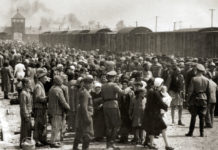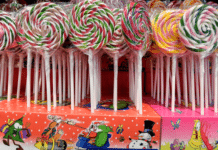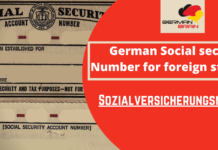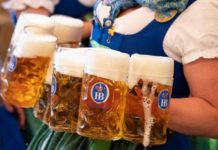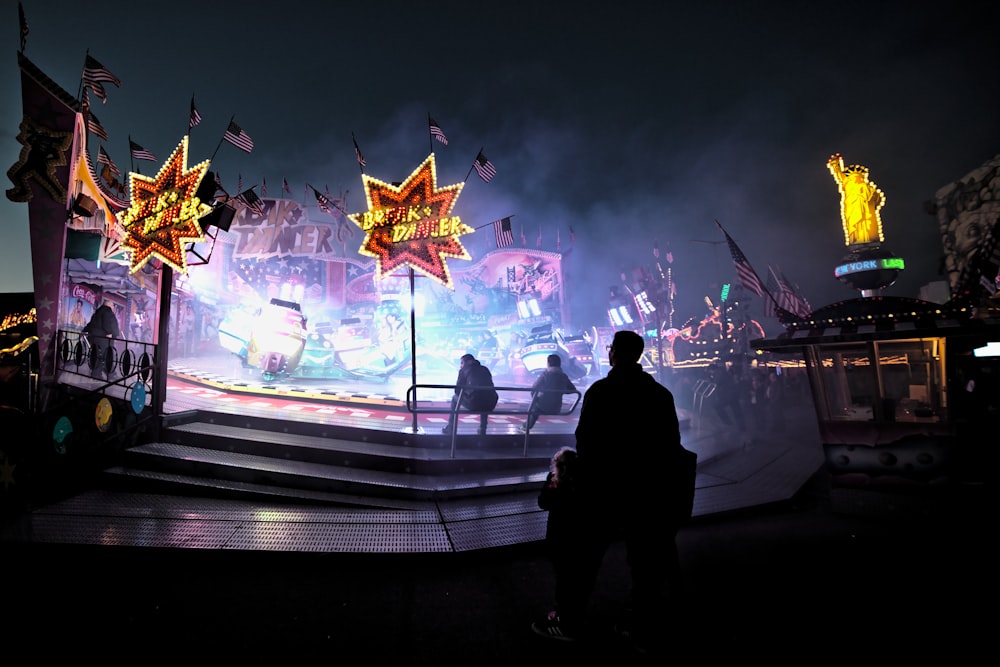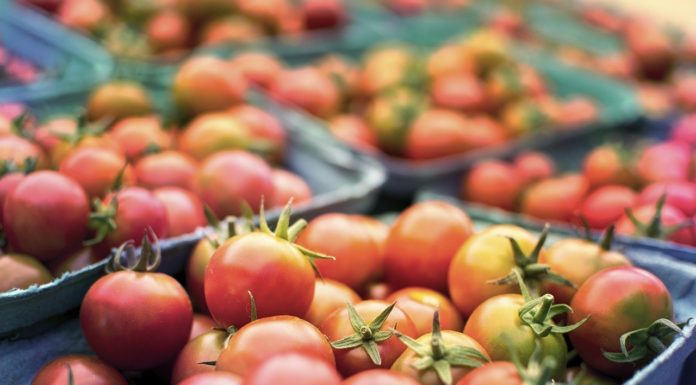Table of Contents
Oktoberfest (German pronunciation: [ɔkˈtoːbɐˌfɛst]) German festival
On Saturday, 19th of every September, revelers from all over the world converge in their favorite joints to mark this important day that is culminated by endless liters of booze. If you happen to find yourself in Germany during this time, then the better because it is the epicenter of everything. Actually, it is the largest Volksfest in Germany, because residents celebrate it from mid-September to early October, which is close to two weeks.
The History of the Oktoberfest – The Origins 1810
Oktoberfest is believed to have originated on the 12th of October 1810, when people gathered to be entertained on a free beer to celebrate the marriage of the crown prince of Bavaria. Eight years later, in 1818, the festival was combined with the state agricultural fair, and some booths served both drinks and beer for entertainment.
History of the Oktoberfest – from 1900 to Present Day
However, in the early 20th century, Oktoberfest was increasingly becoming popular and gaining relevance every year. This attracted many other revelers that saw the booths being developed into large beer halls mainly constructed on plywood. Munich quickly joined the bandwagon, and up to today, it has when its brewers erect temporary structures that can hold up to 6000 people at a time.
The culture and celebration are deeply rooted that even the local government is involved. Munich mayor presides the beginning of every Oktoberfest by tapping the first keg.
Oktoberfest is a party, but it’s also a beer.
How much keg is consumed?
So as not to confuse you, there isn’t any difference between keg and beer only that the former can be smoother or have a lower alcohol concentration. Now, it will surprise you how much alcohol Germans can consume just within this festival alone.
It is believed that revelers consume up to 65,000 hectoliters of beer, which is equivalent to 1,430,000 gallons. The brewery also does something else other than setting drinking spaces, to show their full participation in this festival. During the day, it will be common to see huge beer wagons parading, with fans hanging along in folk costumes.
When you also see children around, don’t get shocked because they are not active drinkers, they just love the fun part of the caravan. And for adults of legal age, what would be better on a weekend if not fun-filled activities and endless liters of booze thereafter?
Well, that is a typical Oktoberfest day for you in Munich. Remember, this festival doesn’t only take place in Munich alone, but in other parts of the country too. In fact, Oktoberfest is a worldwide thing. Munich is only the epicenter of it all.
An Oktoberfest Tour Guide’s Most Frequently Asked Oktoberfest Questions
What does Oktoberfest mean in German?
Oktoberfest celebrations can be found all over the world, but the main event is in Munich, Germany, where the first Oktoberfest was held.
How is Oktoberfest celebrated in Germany?
Characterized by colorful parades, lively musical performances, traditional costumes, delicious food and plenty of beer, Munich’s Oktoberfest is on many travel wish lists. During Oktoberfest, Germany enjoys a long celebration focused on great food, fun music, and of course, lots of beer!
Essential Oktoberfest Vocabulary
Here’s some vocabulary you need to know for Oktoberfest in Germany!
- Oktoberfest — Oktoberfest
- Dirndl — Dirndl
- Oans, zwoa, gsuffa! — One, Two, Drink up!
- Obatzda — Obatzda
- Hendl — Hendl
- Zur Wiesn gehen — Go to the Oktoberfest
- Ein Prosit der Gemütlichkeit! — Cheers, here’s to “cosiness!”
- Eine Maß Bier — One liter of beer
- Lederhosen — Lederhosen
- Volksfest — Folk festival
- Blaskapelle — Brass band
How many days should I spend at Oktoberfest?
Three to four days is the minimum amount of time you need to truly see all of the main sights around Munich, but you can still do a lot with a well planned 1-2 day itinerary. Most people like to enjoy two days at the Oktoberfest fairgrounds and beer halls in Munich
When is the best period to visit Oktoberfest?
No matter which period you attend you are in for an absolute treat, although there are some subtle differences. The Opening Weekend is more expensive across the board due to it being very popular with tourists. As such, the locals tend to prefer the Middle Weekend and Closing Ceremony Weekend, plus mid-week days, as it offers just as much excitement but a much more authentic Oktoberfest experience.
What do I need to bring with me to Oktoberfest?
We’d advise you to only bring along what you’re going to need while at Oktoberfest. Here’s a quick rundown of what you’ll need:
Clothes:
- While days are usually warm, evenings do get cool so bring along a variety of clothing for warm, cool &/or rainy weather.
- Closed shoes – those steins do break occasionally!
Essentials:
- Passport (a visa is not required for Aussies & Kiwis)
- Travel insurance documents – contact us if you’d like information on purchasing travel insurance
- Some Euros in cash
- Towel
Essential Tips For First-Time Visitors to Munich’s Largest Volksfest
- There’s no dress code for Oktoberfest, so wear whatever you like.
- Take plenty of cash to Oktoberfest, more than you think you’ll need
- Plan in advance which beer tent(s) you’re going to visit
- Avoid the crowds to improve your chances of a seat
- Learn some basic German phrases
- Take as few belongings with you as possible
- Don’t buy Oktoberfest tokens – pay with cash
- Learn the lyrics to ‘Ein Prosit’
Ein Prosit (Deutsche)
Ein Prosit, ein Prosit,
Der Gemütlichkeit,
Ein Prosit, ein Prosit,
Der Gemütlichkeit.
Ein Prosit (English)
A toast, a toast,
To cheer and good times,
A toast, a toast,
To cheer and good times.
Tips While you’re at Oktoberfest – The Drinking Stage
You’ve prepared yourself for the big day. Now it’s time to enjoy yourself. Here are our tips for The Drinking Stage.
- Gemütlichkeit! (spirit of warmth, friendliness, and good cheer) Bring this with you on your visit and you’ll be sure to have a great time.
- Try the food at Oktoberfest – it’s surprisingly good!
- Get talking to everyone around you
- Be careful with the drinks. They’re very strong!
- Don’t drink and ride at Oktoberfest
- Drink Augustiner (the best beer in Munich) to avoid a hangover… maybe
- Be careful getting back home from Oktoberfest
How Much Does Oktoberfest Cost?
All the tents are free to enter. Beer is typically around 12 EUR and most full meals are 12–15 EUR. You can get snacks and small meals for around 5 EUR. You can also buy alcohol outside the tents (but not beer), and the drinks cost around 8 EUR. You’ll find tons of stands everywhere with sausage and wurst for 5-6 EUR too.
Which Oktoberfest tent is the best?
Below is the list of the Best Oktoberfest Tents
- Marstall – This tent holds over 3,000 people and is the newest addition to the event. It’s a bit more modern and inventive (you can actually get vegetarian food here) and caters to a younger, hipper crowd.
- Armbrustschützen-Festhalle – This comfortable tent has also been home to a crossbow competition since 1895! It’s one of the most popular.
- Hofbräu Festzelt – This is the most popular tent for international visitors, especially Americans, and is one of the biggest and most famous tents in the faregrounds. It gets busy but I loved it!
- Hacker-Festhalle – This tent is known for it’s painted blue sky and white clouds on the ceiling that can, if the weather is nice, open up to actually show the blue sky above. It’s also one of the more popular tents.
- Schottenhamel – This is the oldest tent at Oktoberfest and has a capacity for over 10,000 people. It’s where the party gets started and is very popular with Germans.
- Winzerer Fähndl – This massive tent is the largest at Oktoberfest with room for 11,000 partygoers. You’ll be able to recognize it by the giant rotating beer glass.
- Schützen-Festzelt – This tent is located off the main drag which means you can sometimes beat the crowds by heading here.
- Käfer’s Wies’n-Schänke – This tent is known to be a favorite of both local and international celebrities as well as their late-night ending time! Lots of people finish their night here.
- Fischer Vroni – If you’re tired of all the pork (the main dish in most tents) then head here for something else: fish!
- Ochsenbraterei – This tent has been around since 1881 and is known for its numerous ox dishes and its big brass band.
- Augustiner-Festhalle – This tent is considered to be the most family-friendly option. It’s also the hardest tent to get a table at as many locals has reserved seats here.
- Pschorr-Bräurosl – The Heide family has been running this tent since 1901 and has their own yodeler.
- Löwenbräu-Festhalle – This tent, which has a giant 15-foot lion at the entrance, has a bit more of an older crowd to it. It’s the favorite of local football players.
- Weinzelt – This tent is another more family-friendly choice, with less traditional offerings like seafood, Thai food, and even wine (something you don’t really see often here).
![Oktoberfest (German pronunciation: [ɔkˈtoːbɐˌfɛst]) German festival](https://germanbrain.com/wp-content/uploads/2020/05/24cc7497-ed4e-47f8-887e-2022bdf34c0a-EPA_GERMANY_OKTOBERFEST.1.jpg)



